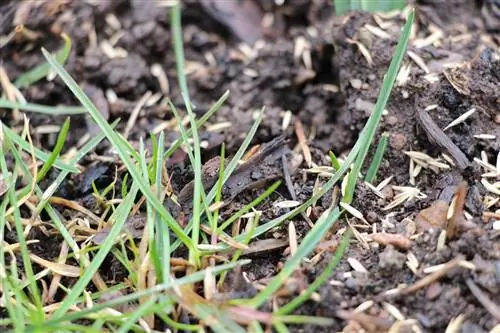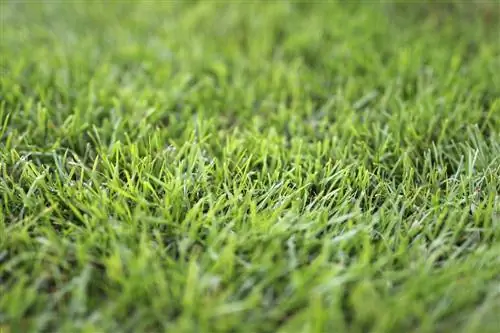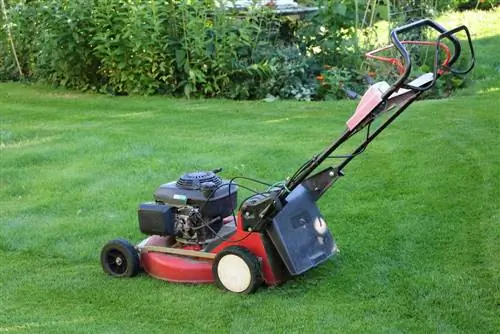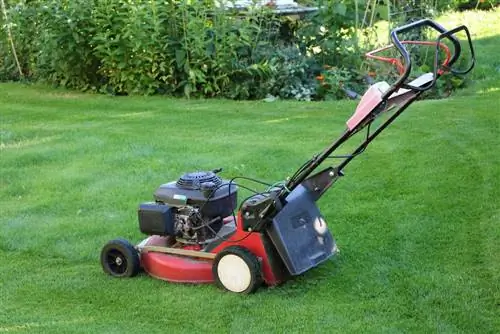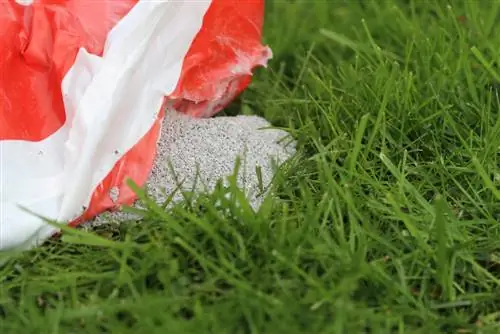- Author admin [email protected].
- Public 2023-12-17 03:39.
- Last modified 2025-01-24 12:45.
When you can access and mow freshly sown lawns depends on various factors. These include, for example, the time of sowing and the weather as well as the length of the stalk. We'll show you what you need to pay attention to.
Time of sowing
The optimal time for sowing is between April and May. Depending on the temperature, germination can be expected after seven to 28 days. If it was not possible to sow in the spring, you can do so between August and September. However, germination may then take more time.
Accordingly, mowing can only take place later. This can prove difficult in colder regions when frost is already occurring. Because then the lawn can be damaged.
Weather
The current weather obviously contributes significantly to the germination time and growth of the plants. Temperatures of around 20 °C and light precipitation are optimal. During persistent or heavy rain, the seeds can be washed away, creating bare patches in the lawn.
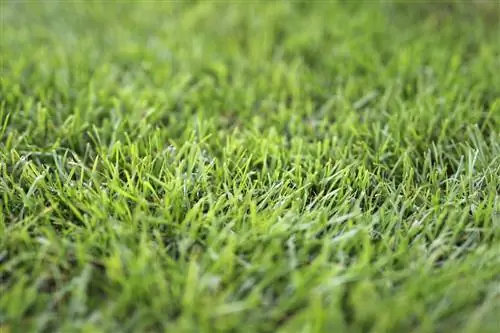
This makes it necessary to reseed again. However, this should only be done after mowing. Otherwise, shortening will be delayed and the result will be uneven.
Type of lawn
There are three main types of lawn plants. The division is made into:
- Resilience
- Location
- Intended use
There are varieties specifically for shade and others that are particularly suitable for frequent use. The most common are:
- Shaded lawn
- Sports and play turf
- ornamental lawn
Depending on the species, attention should also be paid to the height of the stalk. This is a crucial indication of the cutting time. In shaded lawns, more chlorophyll is required due to the lower light and therefore a blade height of between nine and ten centimeters.
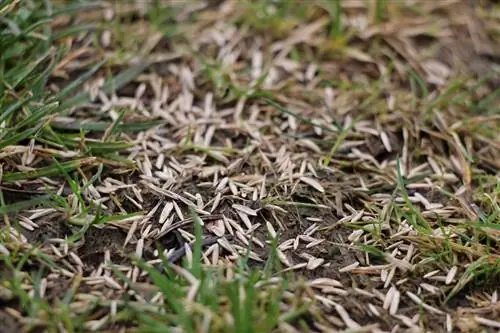
For ornamental breeds, 8.0 to 8.5 centimeters are sufficient for the first cutting. Sport and play breeds for heavier loads can even be cut at a stalk height of seven to eight centimeters.
One-third rule
The one-third rule is that only the top third of the stalks can be cut off. If the grass is nine centimeters long, this means shortening it to six centimeters. If the lawn has already grown taller, measure the length with a ruler and divide it by three. The calculated length may be cut off.
Note:
This rule compacts the lawn without taking too much strength away from it. Therefore, if the grass is very long, it is better to cut it in stages.
Mowing
It's not just the timing of mowing that is important. Other factors also play a role. These include, among others:
- Soil texture
- the right cutting tool
- Weather
Prepare the area accordingly by leveling and smoothing it. Cut on dry days when there is no direct sun and the lawn is not damp. Also make sure that the lawnmower's cutting blades are freshly sharpened. Otherwise, the cutting tools can tear the lawn plants out of the ground.
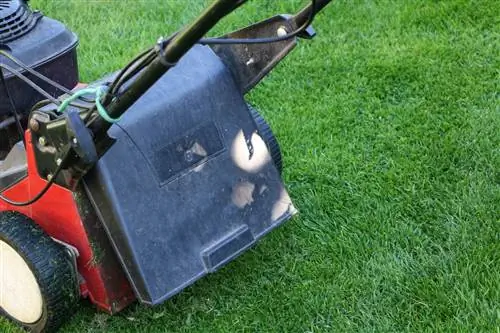
This is the case when the stalks are not yet properly rooted. Be sure to wait for the correct length before entering and cutting the lawn. Also check the wire, knife or cord beforehand and keep them clean and functional.
Another disadvantage is that the cutting surfaces are not straight due to a blunt cutting tool. Instead, they fray and therefore form a target for diseases and parasites.
Tip:
The lawn should preferably not be walked on for a day before mowing. As a result of use, the stalks bend over and the mowing result is not even.
Care and Protection
After mowing for the first time, you should continue to handle the lawn carefully. If possible, you should not enter it immediately after cutting. It is also important to water it sufficiently and, if the soil has not been prepared beforehand, to fertilize it.

